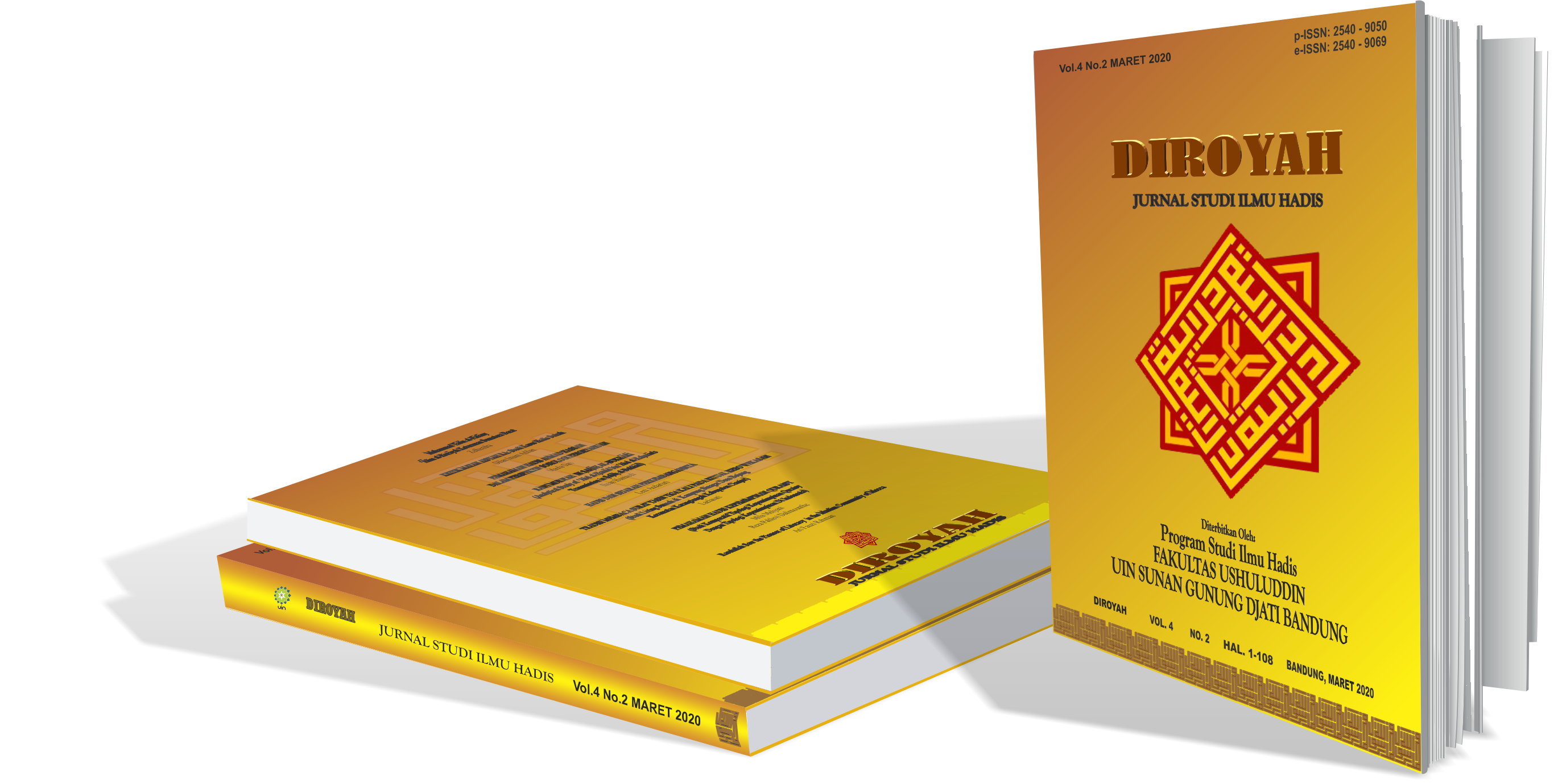Understanding of Creed-Related Hadiths in the Book Tuhfat al-Raghibin by Sheikh Muhammad Arsyad al-Banjari
Main Article Content
Abstract
This study examines the unique approach of Sheikh Muhammad Arsyad al-Banjari in understanding and interpreting creed-related Hadiths in his book Tuhfat al-Raghibin. Al-Banjari, not primarily known for his work in Hadith scholarship, leverages his authoritative knowledge in other Islamic disciplines to offer fresh insights into Hadith interpretation. Employing qualitative research methodology, the study conducts a discourse analysis of Tuhfat al-Raghibin. This involves a detailed examination of the content and textual nuances to understand al-Banjari’s interpretive patterns. The research reveals that al-Banjari's interpretations of Hadiths in Tuhfat al-Raghibin are predominantly influenced by Asharite theology, al-Maturidiyyah, and Shafi'i jurisprudence. His methodological blend contributes to the theological development of Ahl al-Sunnah wa al-Jama'ah, especially in transitioning the religious beliefs and practices of a community from animism-dynamism to monotheism. The findings highlight the significance of al-Banjari's methodology in understanding and applying Hadiths in Islamic law. His approach underscores the need for a balanced interpretation of Hadiths, taking into account historical, social, and contextual factors. The study broadens the understanding of Hadith interpretation and its implications for Islamic jurisprudence
Article Details
Authors who publish with this journal agree to the following terms:
- Authors retain copyright and grant the journal right of first publication with the work simultaneously licensed under a Creative Commons Attribution-NonCommercial-ShareAlike 4.0 International License that allows others to share the work with an acknowledgment of the work's authorship and initial publication in this journal.
- Authors are able to enter into separate, additional contractual arrangements for the non-exclusive distribution of the journal's published version of the work (e.g., post it to an institutional repository or publish it in a book), with an acknowledgment of its initial publication in this journal.
- Authors are permitted and encouraged to post their work online (e.g., in institutional repositories or on their website) prior to and during the submission process, as it can lead to productive exchanges, as well as earlier and greater citation of published work (See The Effect of Open Access).
References
Abdillah, F. R. (2022). TASAWUF WUJUDIYAH: Hakikat Wujud dalam Ajaran Tasawuf Datu Abulung. 327–355.
al-Banjari, M. A. (1997). Tuhfat al-Raghibin fi Bayan Haqiqat Iman al-Mu’minin. Mathba’ah ibn Halabi.
al-Dimyathi, A. B. ibn M. S. (-). Hashiyat I‘anah al-Thalibin. Dar al-Fikr.
Anwar, K. (2022). Ahl as Sunnah waal Jama’ah in Indonesia: A Study on Al-Banjari’s and Islam Nusantara Sunnism. 6, 28–37.
Asmaran, A. (2013). Tarekat-tarekat di Kalimantan Selatan. Jurnal al-Banjari, 12, 177–198.
Daudi, A. (2003). Maulana Syeikh Muhammad Arsyad al-Banjari (Tuan Haji Besar). Yayasan Islam dalam Pagar.
Duderija, A. (2007). Islamic Groups and Their World-Views and Identities: Neo-Traditional Salafis and Progressive Muslims. Arab Law Quarterly, 21(4), 341–363.
Hanafi, H. (2017). Genealogi Kajian Hadis Ulama al-Banjari. Millati: Journal of Islamic Studies and Humanities, 2(2), 169. https://doi.org/10.18326/mlt.v2i2.169-194
Hasan, N. (2008). The Tuhfat al-RÄghibÄ«n: The work of Abdul Samad al-Palimbani or of Muhammad Arsyad al-Banjari? Bijdragen tot de taal-, land- en volkenkunde / Journal of the Humanities and Social Sciences of Southeast Asia, 163(1), 67–85. https://doi.org/10.1163/22134379-90003680
Huda, M. K. (2018). Paradigma Metode Pemahaman Hadis Klasik dan Modern: Perspektif Analisis Wacana. Refleksi, 15(1), 29–62. https://doi.org/10.15408/ref.v15i1.9704
Iqbal, M. (2021). Nuansa Fiqih dalam Pemikiran Teologi Syekh Muhammad Arsyad Al-Banjari Pada Risalah Tuhfat Al-Râghibîn. Khazanah: Jurnal Studi Islam dan Humaniora, 19(1), 21. https://doi.org/10.18592/khazanah.v19i1.4938
Jannah, M. (2019). Manaqib In The Reception of The Banjar Community: Sanctification of Religious Text. DINIKA : Academic Journal of Islamic Studies, 3(3), 323. https://doi.org/10.22515/dinika.v3i3.1353
Nadhiroh, W. (2019). Nalar Keberagamaan Masyarakat Banjar: Dari Mistis-Realis Hingga Tradisionalis-Kritis. Al-Banjari : Jurnal Ilmiah Ilmu-Ilmu Keislaman, 18(2), 246. https://doi.org/10.18592/al-banjari.v18i2.3003
Othman, M. R. (1998). The Role of Makka-Educated Malays in The Development of Early Islamic Scholarship and Education in Malaya. Journal of Islamic Studies, 9(2), 146–157. https://doi.org/10.1093/jis/9.2.146
Rusydi, M. (2010). Analisis Atas Tuhfah Ar-Râghibîn Karya Muhammad Arsyad Al-Banjari. Jurnal al-Banjari, 8, 35–58.
Sookhdeo, P. (2006). Issues of Interpreting the Koran and Hadith. Connections: The Quarterly Journal, 05(3), 57–81. https://doi.org/10.11610/Connections.05.3.06
Suharto, B. (Ed.). (2019). Moderasi Beragama: Dari Indonesia Untuk Dunia (Cetakan I). LKiS.
Syarifuddin, S. (2013). Kritik M. Arsyad Al-Banjari terhadap Beberapa Kepercayaan Masyarakat Banjar. Vol. 12 No. 24, 45–63.
Tamyiz, A., Subandi, S., Fadillah, K., & Hendrayani, S. (2021). The Study of Methodology of Book Tuhfah ar-Ragibin Fi Bayan Haqiqah al-Iman al-Mu’minin wa Ma Yufsiduhu Min Riddah al-Murtaddin. Bulletin of Pedagogical Research, 1(2), 198. https://doi.org/10.51278/bpr.v1i2.198
Wan Mohd Shagir, A. (1990). Syeikh Muhammad Arsyad al-Banjari Pengarang Sabil al-Muhtadin. Khazanah Fathaniyah.
© 2020 by the authors. Submitted for possible open access publication under the terms and conditions of the Creative Commons Attribution (CC BY SA) license (https://creativecommons.org/licenses/by-sa/3.0/).

